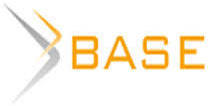Introduction. Discussing religions in a globalized world. Trends, changes and novelties
Discussing and debating religion means moving in a complex, populated and global territory. It is complex because the border between the religious and the spiritual is increasingly unclear, less univocally defined. If this does not surprise us, by now it is equally evident that religion has not lost importance in either the private or the public sphere. The prophecy, which many people held firmly, that it would lose ground as modernity (and post-modernity) advanced has not come to pass (Soper and Fetzer 2017). To paraphrase the well-known citation of an American sociologist, not only is God not dead but he is enjoying excellent health (Zuckerman 2016). Furthermore, one should not stop at Christianity or the West. From Buddhism to Islam to new religious and spiritual movements, the theme must now be understood in the context of worldwide, cross-cultural dynamics, partly as a consequence of recent decades’ remarkable processes of human mobility. A generation ago, the dominant paradigm under this heading was the significance and consequences of a loss of relevance of the religious message both in the public space and in the private sphere. To put it briefly, reflection rotated around the consequences of typical processes of advanced modernity which would, it was supposed, reduce – to the point of annihilating – the influence of religion, which would be followed by “collective amnesia regarding history, beliefs and religious practices” (Clarke 2016, 3). Indeed, several times sociologists have spoken of the end of religions, especially by emphasising characteristics and developments of the secularization phenomenon.
Two decades later, the landscape has changed completely: studies and research underline the vitality of the sacred at the individual, group and institutional levels (Casanova 2000; Norris and Inglehart 2007). But then they had to reconsider why the different religious forms continue to connote the most diverse cultures in a way that at times are quite manifest in other cases are not. At least three of the most significant authors have backtracked on their prediction of the extinction of religion: Harvey Cox, Sabino Acquaviva and Peter Berger. The first was the author of a book, The Secular City (1965), which in its time had a very wide echo (about one million copies sold) and was translated into about twenty languages: it supported the imminent death of God and the advent of an areligious era. Even before Cox, Sabino Acquaviva had spoken of Eclissi del sacro nella civiltà industriale (Eclipse of the sacred in industriale civilization, 1961), leveraging on the decline in religious practice to predict the end of religion, only then to correct his aim and specify that it was only the end of the magical use of the sacred (Acquaviva, Stella, 1989). Peter Berger was, with Thomas Luckmann (author of The Invisible Religion, 1967), a theorist of the process of secularization and religious pluralism (The Heretical Imperative, 1979), but later returned to milder views in recognition of the persistence of religious experience despite crises and transformations, alternating trends and multiple difficulties (2008). Besides the return of the religions to the stage, another increasing phenomenon has been investigated by the scholars: the rise of nones, especially among young people. The concept of nones was coined by Glenn Vernon in his article entitled “The Religious Nones: A Neglected Category” (1968). On this subject, for some time now, there has been copious literature. For instance, British sociologist Lois Lee is the author of numerous essays and principal investigator of the “Understanding Unbelief” programme (2017-2021). Another specialist scholar in the field, mentioned above, is Phil(ip) Zuckerman. Since 2012 there has been a journal with open access entitled Secularism & Nonreligion, which has an interdisciplinary approach.
A “Non-Religion and Secularity Research Network” (NSRN) has also arisen around Colin Campbell (1971). Statistics on the number of atheists, agnostics and non-affiliated religionists around the world are constantly being updated by the Pew Research Center (www.pewresearch.org). A monographic issue of the Annual Review of the Sociology of Religion (Vl. 7, 2016) on atheism was edited by Roberto Cipriani and Franco Garelli just to mention a couple of examples and enable readers to explore the debates through their pages and reference lists.
However, the list of interests linked to the study of the sociology of religion is long and quite complex, aimed at exploring new themes but without neglecting the development of its traditional contexts. There are specific national, generational and gender – as well as socialization and opportunity to attend religious environments – characteristics.
The fact is that religion, like politics, economics and medicine, undergoes continuous setbacks due to the events of the moment and/or of an entire era, because of which it shows its shortcomings, denotes delays, appears inadequate, but then is able, because of its historical roots (multi-millennial) and the weight of its organisational structures (central and peripheral, diffused and channelled) and to withstand and overcome adversity with the support of a long time and lability of social memory.
Thus debates and questions are initiated which are then contextualized within socio-political dynamics. In this sense, the contributions to this issue furnish an important, but not exclusive, in-depth account of East-Central European environments. Inevitably the sociology of religion debate is interwoven with the effects of the Cold War and the subsequent glasnost: references to the historical dimension – as well to more recent trends such as migratory mobility – are present in many of the contributions.
The articles in this issue could be divided into two sections: religion, socialization and national identity; and «weak» religion and religiousness.
In the first section, the authors discuss the nexus between religion, socialization and national identity using different territorial perspectives and various scientific and methodological approaches. Mirko Blagojević and Vladimir Bakrač, in their paper “Dynamics of people’s attachment to the (Orthodox) religion and the church in Serbia”, explore historically and sociologically the relationship between identity and religion, taking into account the dimensions of religiosity, including ways of following the Church’s statements. Religious ties and involvement can be different across generations: in this respect, Ivan V. Pavlyutkin describes in his “Dynamics of the religiosity of youth in Russia” to what extent in Russia young people swing between various religious attitudes, from those who can identify as strong believers to those who can be fitted in the category of nones. This paper content comparison of the results of formalized all-Russian polls with different instruments.
Dmitry A. Markov’s paper entitled “Fertile attitudes of modern clergy families of the Russian Orthodox Church: the typological experience” focuses on the subgroup of clergy families. Coping with the challenges of transformations linked to socio-political-economic scenarios in the Russian context means considering key issues concerning birth control, abortion and the role of religion in family formation and children’s socialization. All these topics are central to the scientific debate concerning the role of religion in informing behaviour, values and attitudes. Religions have been for long-time driving forces in the personal decision-making process, even if not always explicitly, especially in the Central-Eastern European and Russian contexts. In the past twenty years, as various research has shown, changes have taken place and new landscapes emerged. Among these novelties, we can mention the increase of religious pluralism due to migratory chains and the rise of the appeal of Oriental religions. Four papers explore the two above-mentioned novelties. Nemanja Vukcević opens this subsection with an overview of the relationship between religion and migration, an old topic at the crossroads of migration and religious studies. Roberta Ricucci with her paper on “Growing up in the shadow of the Holy Shroud. Muslims’ second generations in Italy” pays attention to second-generation Muslims in Italy and their religious socialization, pointing out generational similarities to Italian peers in shifting towards a more secular attitude and religious belonging expressed as a cultural sharing rather than a strong personal identification. Svetlana V. Ryazanova and Pumla Gobodo-Madikizela enlarge the discussion, considering both Muslims and Pentecostals in their contribution entitled “Trauma as a heritage: the experience of believers’ perception” and remembering to what extent religious pluralism is in the DNA of several countries, as it is in the region of the Western Urals. The paper describes the effects on the religious identity of trauma and persecution, revealing both individual and collective reactions and memories.
The Muslim minorities across Europe, from Portugal to the Urals, question scholars and policymakers on the possible accommodation of sharia and Islamic rules outside Muslim countries. Nicola Jorshevski’s contribution presents a description of the intertwining of religion and politics from the Islamic perspective which is interesting to better understand the requests and attitudes of Muslim minorities in the diaspora.
Also linked to the globalization trend and the increasing circulation of ideas, ways of living and more individualized religious attitudes connected with spiritual elements and wellbeing is the growth of conversion to Buddhism. Valentina B. Isaeva and Konstantin S. Divisenko explore this phenomenon through a qualitative study, pointing out the key successful elements, among which cognitive aspects seem to be the most relevant, which are responsible for conversions.
The closing paper (“Religion, politics and challenges of contemporary European identity” by Deacon Hadzi Nenad M. Jovanovich) of this section widens the perspective, discussing the relations among religion, politics and identity in the European context. The debate on the reciprocal intertwining is not new and it resurges from time to time, as occurred during the debate on the European Constitution. The paper illustrates and discusses the various aspects of what should be considered one of the core debate from the Roman Empire to now, the era when the revitalization of religions in the public sphere goes hand-in-hand with the perspective of atheists and nones.
The majority of the mentioned papers concerns qualitative insights on the complex topic of the intertwining of religious identity and other issues, swinging from family socialization to political contexts. These relevant findings should be supported by quantitative data, an aspect which opens up discussions on methodological issues. Indeed, the second section of this issue starts with Victor V. Sukhorukov’s contribution (“New logical bases for research of Orthodox churchliness”) which is the methodological counterpart to the subsequent essay on weak religiosity, taking an interest in churchliness and turn in proposing a corrective, inspired by the C-index (index of being churched) by Chesnokova, which subdivides the subjects into five categories, which are so many questions about religiosity (plus 6 additional questions): very weakly churched, weakly churched, beginners, semi-churched, churched. Innovation comes from considering affiliation to the Orthodox Church, not in strict and rigid but rather vague, fluid terms. Which avoids overestimating the number of members and identifying other attitudinal and behavioural possibilities, up to the point of establishing what the data relating to non-members may be, therefore to individuals without a Church. In this way we recover various elements susceptible to explanation and interpretation, which otherwise would escape, preventing a scientifically valid and generalizable profile. In practice, Sukhorukov is in favour of fuzzy logic, based on 5 other levels: prohibited, undesirable, neutral, desirable, obligatory. The weakening of religion turns out to be a physiological phenomenon, as demonstrated by Helena V. Prutskova, Kirill V. Markin and Polina V. Vrublevskaya in their chapter on “‘Q-methodology’ in the study of "weak" religiosity”, which is also a good exercise of methodological approach, as it suggests no longer seeking elements of transcendence in religious practices but especially in vital experiences such as traditional religiosity, spirituality, family, work, politics, body, individualism and environmentalism. But equally physiological and predictable is the phenomenon that international sociology of religions now qualifies as “nones”, i.e. those who do not belong to a religious confession, do not believe in the divinity and do not participate in any religious rite. Finally, Helena D. Rutkevich went even deeper into the issue of non-religiousness, dealing with ‘Religion’, ‘No religion’ and ‘Spirituality’ of the “‘Nones’: Issues of definition and study”. She concludes that we are not dealing with non-religious and secular people, as they present unpredictable combinations between various religious parts, bringing together “spiritual” and “non-religious” and giving rise to a very complex phenomenology.


















Пока никто не оставил комментариев к этой публикации.
Вы можете быть первым.
Acquaviva, S. (1961), Eclissi del sacro nella civiltà industrial [Eclipse of the sacred in industrial civilization] [The decline of the sacred in industrial society, Blackwell, Oxford, 1971], Edizioni di Comunità, Milano.
Acquaviva, S. (1989), Fine di un’ideologia: la secolarizzazione [End of an ideology: the secularization], Borla, Roma.
Berger, P. (1979), The Heretical Imperative, Anchor Press, Garden City, NY.
Berger, P. (2008), “Secularization Falsified”, First Things. A Monthly Journal of Religion and Public Life, 180, 23-27.
Campbell, C. (1971), Toward a Sociology of Irreligion, Macmillan, London and Basingstoke [Herder and Herder, New York, 1972; Writers Printshop, London, 2013, revised edition].
Casanova, J. (2001), “Religion, the New Millennium, and Globalization”, Sociology of Religion, 2001, 62 (4), 415-441.
Clarke, P. B. (2008), Encyclopedia of New Religious Movements, Routledge, Abingdon.
Cox, H. (1965), The Secular City, Macmillan, New York.
Glenn, V. (1968), “The Religious Nones: A Neglected Category”, Journal for the Scientific Study of Religion, 7, 219-229.
Lee, L. and Bullivant, S. (2016), Oxford Dictionary of Atheism, Oxford University Press, Oxford.
Luckmann, T. (1967), The Invisible Religion, Macmillan, New York.
Norris, P., and Inglehart, R. (2007), Sacred and Secular. Religion and Politics Worldwide, Cambridge University Press, New York.
Soper, J. C. and Fetzer, J. S. (2007), “Religious Institutions, Church-State History and Muslim Mobilization in Britain, France, and Germany”, Journal of Ethnic and Migration Studies, 33, 933-944.
Zuckermann P. (2020), Society without God. What the Least Religious Nations Can Tell Us about Contentment, New York University Press, New York [second edition].